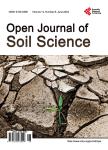How United States Agricultural Herbicides Became Military and Environmental Chemical Weapons: Historical and Residual Effects
How United States Agricultural Herbicides Became Military and Environmental Chemical Weapons: Historical and Residual Effects作者机构:Department of Natural Resources and Environmental Sciences College of Agriculture and Environmental Sciences University of Illinois Urbana USA School of Natural Resource Sciences North Dakota State University Fargo USA
出 版 物:《Open Journal of Soil Science》 (土壤科学期刊(英文))
年 卷 期:2022年第12卷第2期
页 面:13-81页
学科分类:0202[经济学-应用经济学] 02[经济学] 020205[经济学-产业经济学]
主 题:Agent Orange Agent Blue Dioxin TCDD Cacodylic Acid Arsenic Environmental Weapons Chemical Weapons Ecocide TIBA 2 4-D 2 4 5 -T Ezra J. Kraus Arthur W. Galston Green Revolution Agricultural Herbicides
摘 要:Discoveries in Charles Darwin’s laboratory led to modern herbicides. Darwin discovered the internal mechanism that directed plants to grow toward sunlight and sources of water. Scientists in Europe and America later called this mechanism a plant’s hormone response system. Administrators and scientists, including Dr. Ezra J. Kraus, the Head of the Botany Department at the University of Chicago and a plant physiologist, suggested on the eve of WWII that weed killers had significant military value as chemical weapons. Dr. Kraus obtained access to a synthetic chemical, 2,4-D, and found that when the chemical was absorbed through the leaves of plants, it destroyed a plant’s hormones. After exposure, the plant experienced rapid and uncontrolled growth, and then the leaves shriveled, died and fell off. Dr. Kraus obtained funding for his Department of Botany research program from Department of Defense (DOD) during World War II (WWII). Camp Detrick (Biological Weapons Laboratory) scientists later obtained samples of newly created 2,4,5-T which contained unknown amounts of the by-product dioxin TCDD. In the 1950s and 1960s, Fort Detrick military scientists formulated the herbicide Agent Orange, which was a 50 - 50 mixture of 2,4-D and 2,4,5-T. These dual purpose herbicides were used by DOD and USDA. American and European farmers in the 1940s used 2,4-D and 2,4,5-T to eliminate weeds from pastureland and cropland. After WWII, synthetic herbicides (and pesticides) development continued in tandem with production of synthetic fertilizers and breeding of high-yield plant varieties. These new agricultural products were then shipped worldwide to increase crop yields, as part of the Green Revolution. This new system of agricultural technologies was intended to eliminate global starvation and increase food security by increasing field and farm crop yields. In contrast, the goal of military use of herbicides, as chemical weapons, was to defoliate jungle forests and destroy food crops a



